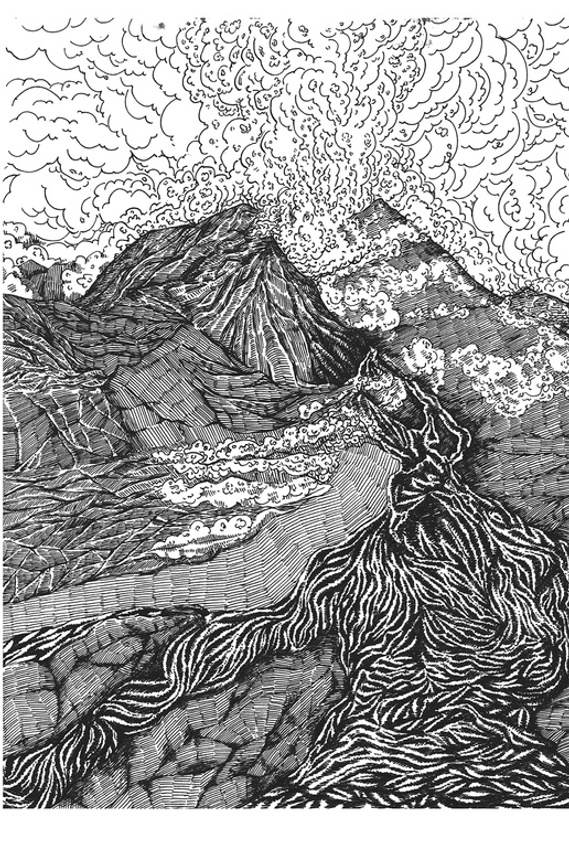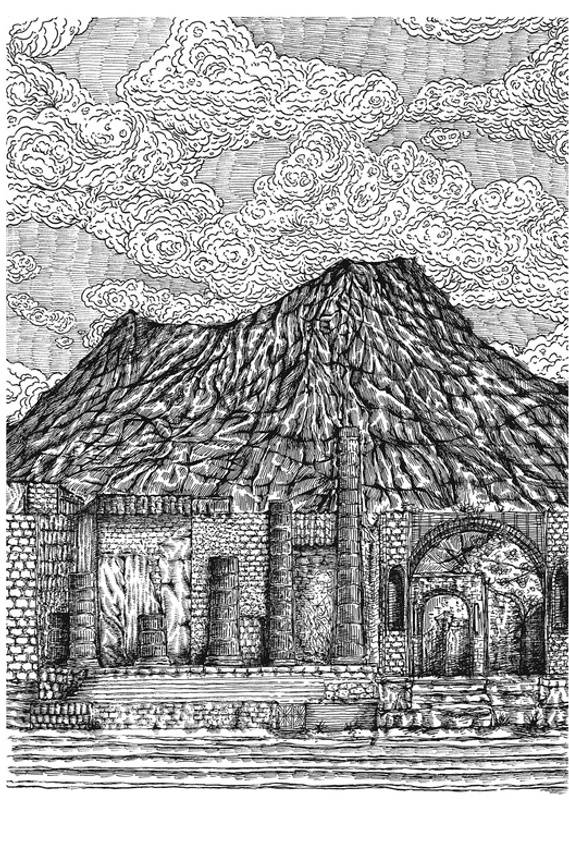A hand-made book design based on my understanding of the story <On Exactitude In Science>.
I took the volcanic eruption in Pompeii as an example to show a city continues to develop and,
after reaching its apex, being destroyed in one night.
基于对故事《论科学的准确性》的理解,手工制作的书籍设计。
我以庞贝的火山爆发为例,来说明城市在不断发展,
然而在达到顶峰后,被摧毁仅在一夜之间。
...In that Empire, the Art of Cartography attained such Perfection that the map of a single Province occupied the en-tirety of a City, and the map of the Empire, the entirety of a Province. In time, those Unconscionable Maps no longer satisfied, and the Cartographers Guilds stuck a Map of the Empire whose size was that of the Empire, and which coin-cided point for point with it. The following Generations, who were not so fond of the Study of Cartography as their Forebearers had been, saw that the vast Map was Useless, and not without some Pitilissness was it, that they delivered it up to the Inclemencies of Sun and Winters. In the Deserts of the West, still today, there are Tattered Ruins of the Map, inhabited by Animals and Beggars; in all the Land there is no other Relic of the Disciplines of Geography.
Jorge Borges, Suarez Miranda, Viajes de prudentes, Libro IV, Cap.XLV, Lerida,1658
...在那个帝国,制图的艺术达到了如此完美的地步,一个省的地图占据了整个城市,而帝国的地图则占据了整个省。随着时间的推移,那些不合情理的地图不再令人满意了,制图师协会贴上了一幅帝国地图,它的大小和帝国的大小一样,而且用它的硬币点对点地计算。后来的几代人不像他们的祖先那样喜欢研究制图学,他们看到那张巨大的地图毫无用处,而且不无怜悯之心,于是就把它交给了太阳和冬天的恶劣环境。直到今天,在西部的沙漠中,仍然有地图的废墟,居住着动物和乞丐; 在所有的土地上没有其他地理学科的遗迹。
豪尔赫·博尔赫斯, 1658











